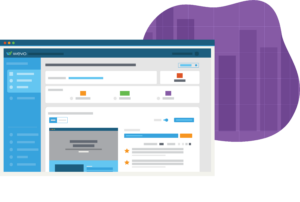Contents
Last week over 1,400 higher education marketers gathered at Caesar’s Palace in Las Vegas to attend the 30th annual AMA Higher Ed Marketing Symposium. Amid the glamor and lights of Vegas, attendees dove headfirst into salient discussions on key topics in higher ed marketing, including:
- Increasing enrollment
- Pivoting to the changing needs of Gen Z (Zoomer) students
- Rapidly evolving social media best practices
- Experiential marketing
- The increasingly important use of video
As diverse as these themes were, there was one common thread that surfaced time and time again throughout the conference – the importance of listening to customers.
The keynote session kicked things off with two dire statistics:
- College enrollment has declined for eight consecutive years.
- Based on demographic trends, the US college population will experience an even more significant decline beginning in 2025.
Against this level of competition for a shrinking and rapidly changing prospective customer base, how can Higher Ed marketers win the enrollment battle?
From the keynote to breakout sessions and general chit-chat on the exhibit floor, every marketer in attendance stressed over and over the need to really connect with and understand what drives and motivates their prospective students. Mentioned nearly as often as the need to connect with them, was how it is the students who are the customer – not the administration, not fellow university staff, and most certainly not faculty. Making decisions based on the wrong input was seen as worse than not listening at all.
Fun anecdote: During the conference I heard marketers time and again tell me about campaigns they were ready to roll out, only to have “well-meaning” faculty or administrative higher-ups make substantive changes (or pull the plug entirely) because they didn’t understand the messaging. When the adjusted campaigns produced little to no results guess who got the blame?
Far and away, the most popular session at the conference was all about appealing/marketing to Gen Z (Zoomers), and here again, we heard ad nauseam the importance of listening to the customer. For this generation of prospective students (who are facing skyrocketing costs and growing concern over the value of a degree), the value of being heard is unparalleled in today’s digital marketing world. As customers come to expect customized, personalized messaging and content, the need for verbatim feedback is higher than ever.
Authenticity is critical to marketing success but it rises to a whole new level with Zoomers. One particularly interesting story told during the session was about a school who asked their existing students (the same audience they hope to reach with new enrollment campaigns), about their digital marketing presence. What they found was that any kind of obvious stock footage on a webpage was an instant turnoff – much more so than with Millennials. Zoomers don’t resonate with a random model – they want to feel represented, and relate to the person behind the message. When the stock footage was replaced with real, ordinary students, conversion rose significantly.
Taking authentic engagement to the next level, we heard more success stories from universities who brought on social media ambassadors from the student body. These students agreed to document parts of their student life on Instagram, Snapchat, Facebook, and TikTok, and the result was a huge uplift in social media engagements and a more positive outlook of the school. Compared with the more professionally curated posts universities have always relied on, we saw clearly that once again, authenticity and the “voice of the customer” drove the highest ROI.
A final example was highlighted in a breakout session on engaging online learners. The big “revelation” of the session was all about the success that some schools have seen from surveys of their existing online students. By asking students about things that matter to them, like why they chose the school they did, what they liked/didn’t like, and other relevant questions, students not only felt heard and validated by their school, but the feedback was incorporated into future enrollment campaigns to great success.
With a heavy focus on customer-centricity at the AMA Higher Education Marketing Symposium, it’s clear that higher ed marketing is in the midst of a fundamental shift. Unfortunately, despite the clear need for verbatim customer feedback, finding and talking to students and taking action on those insights remains an elusive goal for many higher ed marketers. The marketing strategies of yesterday are no longer enough to attract the students of today. The good news is that as awareness grows about the need for customer-centric marketing, more and more universities will transition their marketing efforts away from antiquated top-down marketing campaigns and into the world of personalized, customized marketing content. At the rate we’re going, the AMA 2020 conference will usher in a new decade of customer-first marketing.
About Ed Wolf
Ed is Director of Sales for Higher Education at WEVO.
About WEVO
WEVO is the only tool that pinpoints why visitors aren’t converting BEFORE going live – no need for live traffic. WEVO uses target audience and AI to score your page, and provides visitor feedback, expert analysis, and recommendations for conversion improvement. To learn more about WEVO and our unique approach to helping universities listen to their customers, please visit us at wevo.ai



